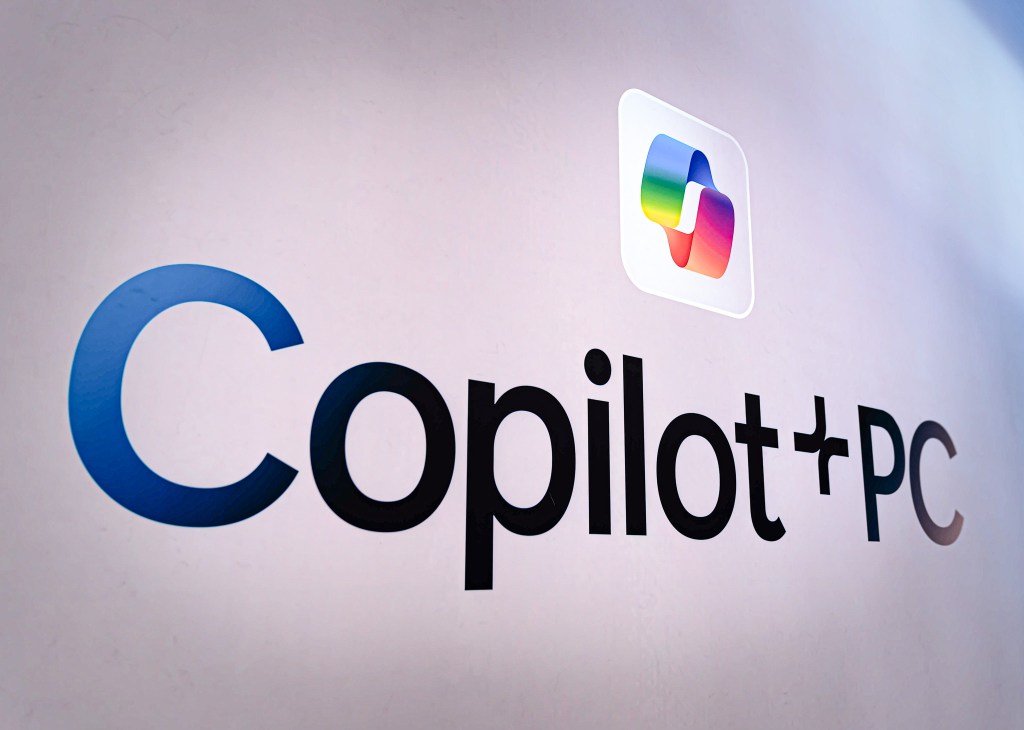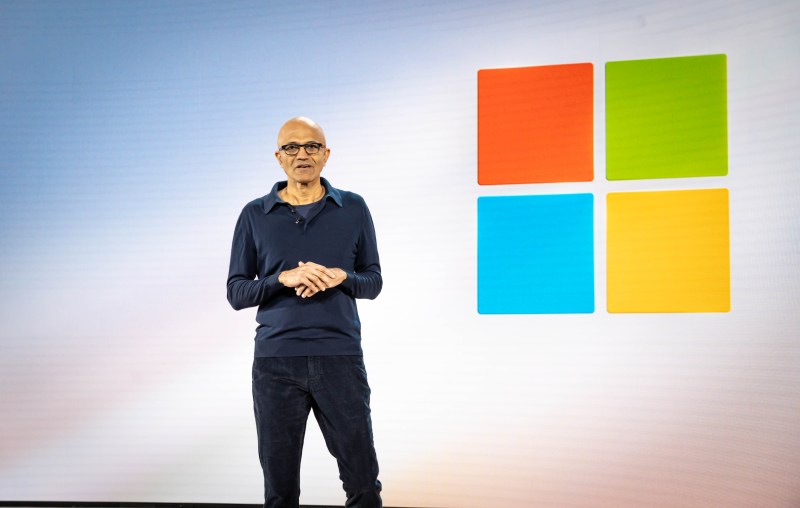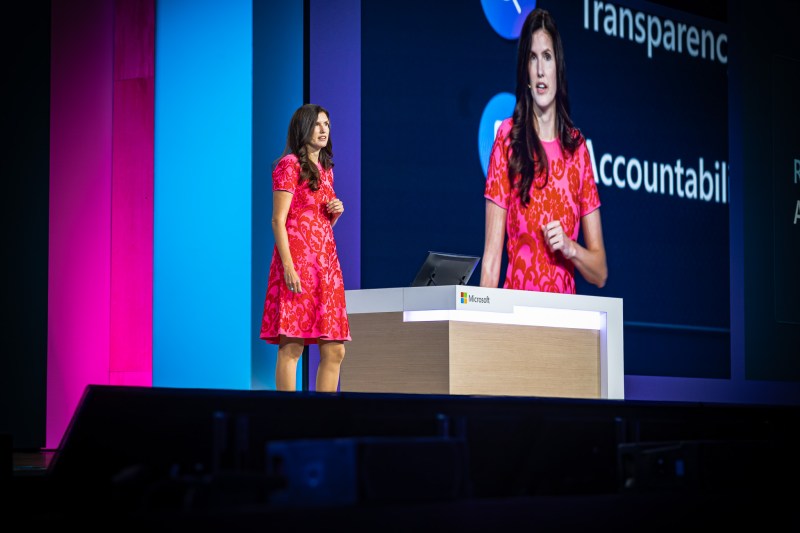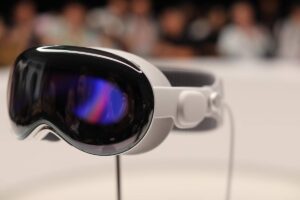
Join us in returning to NYC on June 5th to collaborate with executive leaders in exploring comprehensive methods for auditing AI models regarding bias, performance, and ethical compliance across diverse organizations. Find out how you can attend here.
The era of the AI PC, or rather, the Copilot+ PC, has arrived.
This week, Microsoft introduced its vision of what personal computing will look like in this artificial intelligence-filled world. “We’re entering this new era where computers not only understand us but can anticipate what we want and our intents,” chief executive Satya Nadella remarked while explaining the platform shift starts with Microsoft Copilot.

“It puts knowledge and expertise at your fingertips and helps you act on it. It works across devices, every role, function and industry,” he says. “Copilot is empowering every person and every organization on the planet to be more knowledgeable, productive, creative and really be more connected to everything that matters to all of us.”
Later, Nadella remarks, “We believe AI will be distributed; the richest AI experiences will harness the power of the cloud and the edge working in concert. This, in turn, will lead to a new category of devices that turn the world into a prompt; that can see us, hear us, [and] reason about our intent and surroundings.” This is what (pardon the saying) prompted Microsoft to introduce Copilot+ PC.

Monday’s announcement was entirely consumer-focused, but it signaled Microsoft wants to play a leading role in this growing market. Gartner estimates AI PCs will represent 22 percent of all PC shipments this year. “The rapid adoption of on-device GenAI capabilities and AI processors will eventually become a standard requirement for technology vendors,” Ranjit Atwal, the research firm’s senior director analyst, writes. “This ubiquity will pose challenges for vendors in differentiating themselves from competitors, making it harder to create unique selling points and drive increased revenues.”
What impact will this new computing reality have on the enterprise? Will it persuade business leaders to adopt AI? How will knowledge workers embrace having an AI trained on their actions right at their fingertips? Are there privacy and data security implications to be concerned about?
Though Microsoft has yet to reveal its business play, we thought we’d ask multiple company executives and analysts for their thoughts. Moor Insights & Strategy Principal Analyst Anshel Sag shares with VentureBeat that with Copilot, Microsoft has “set the playfield” regarding how AI can be used in the enterprise. It showed how organizations “got familiarized and created a demand for Copilot. And now they’re going to have demand for copilot systems, systems that are optimized for Copilot, that will run it smoothly and work really well with what they’re already using in the cloud.”
A brief overview of Copilot+ PC

Microsoft’s Copilot+ PC is a category of computers infused with artificial intelligence. Acer, ASUS, Dell, HP, Lenovo and Samsung are the first OEMs to manufacture them. Not only will these laptops and PCs include access to the latest advanced models available in Microsoft Copilot—including OpenAI’s GPT-4o— but they’re designed with a new systems architecture featuring a powerful Neural Processing Unit (NPU) capable of over 40 trillion operations per second (TOPS). Lastly, every device will have a “re-architected” Windows 11 operating system optimized for performance and battery life.
“Copilot+ PCs are the fastest Windows PCs ever built,” Yusef Mehdi, Microsoft’s consumer chief marketing officer, claiming them as being “58 percent faster than the most advanced MacBook Air with the M3 processor.”
Other features that are exclusive to Copilot+ PCs include:
- Recall: functions as your photographic memory, accessing virtually what you’ve seen or done on your PC
- Live captions: provides real-time translations in video chats from Portuguese, Spanish, French, Polish, German and Icelandic into English
- Image co-creation: capable of rendering an image through a doodle or sketch and text prompts
“This is the beginning of a revolution for Microsoft, to be able to say, ‘Hey, enterprise users, there’s more to what you can do than just what we’ve had before,” Constellation Research Principal Analyst Ray Wang states. “And I think that reset’s really important not just for the PC industry and the chip industry but also for everybody in the PC ecosystem.”
1. Solving the ‘blank page’ problem
It’s easy to envision knowledge workers leaping at the opportunity to use a Copilot+ PC because it gives them AI at their fingertips. After all, employees want to use the technology at work, even resorting to bringing their own AI if one isn’t provided by their company. However, one obstacle in their way might be the IT managers who would need to vet Copilot+ PCs before they’re doled out to the workforce.

Could scientists, educators, salespeople, engineers, marketers and executives find use cases for this novel computing platform? Absolutely. It’s possible that at some point, the Windows operating system could evolve to consist of specialized Copilot-powered native apps installed specifically for an organization’s workers. The Microsoft executives we spoke with didn’t push back on this idea, especially when these apps might be built using AI Azure Studio, Copilot Studio and other platform tools.
Sag echoes the sentiment. “A lot of these companies have been building quite large repositories of data. And they all have different approaches to doing things. So I think, as they train these models over time to be more personal—personalized to the enterprise, we’ll see more of this customization occurring over time,” he remarks. The Moor Insights & Strategy analyst credits OpenAI’s GPT-4o for helping to establish a baseline across the industry, touting the model is inspiring “more enterprises and developers to understand how they can build and what to build to.”
Copilot+ PC could ultimately solve the notion of the “blank page” problem for workers, a phenomenon we’ve all experienced. Using AI on our work computer could prevent this from occurring. Seth Juarez, Microsoft’s principal program manager for its AI platform, explains that copilot could “jumpstart us into the creative mode, quicker into the edit mode.” The earlier we get there, “the faster we start to produce stuff, the more productive we’re going to make” workers.
“In every space, you’ll start to see the blank page problem almost the same way the tractor alleviated people from the shovel. And you’ll see people being more productive,” he says. “We want to empower every person and every organization on the planet to achieve more. And you can achieve more by getting the creative juices flowing faster because humans are better at editing.”
2. Augment, accelerate or automate?
Copilot+ PCs could also enable knowledge workers to use AI to streamline their day-to-day activities, using the power of the built-in NPU to train models on how to address those tedious tasks no one ever wants to do. “The NPU chip basically gives every enterprise the ability to think about where AI can either augment, accelerate or automate their tasks,” Wang shares. “What we were seeing is really the implications of being able to take advantage of AI at the chip level and what it would mean at the application level. So, every enterprise now has the opportunity to do more with less.”

He outlines five trends he believes will emerge due to AI PC’s emergence and how it will impact the enterprise. The first is a level of augmentation never seen before, where computers are able to do things we couldn’t have imagined before, remember things that we would have seen, and identify patterns that weren’t present. The second trend is that there will be an acceleration of decision-making. “Our ability to assimilate more information much more rapidly so we can make better decisions is happening in front of us,” he says.
Third, the automation capabilities of AI will handle tasks in the background that we normally would have done manually. The penultimate trend is advisement, in which technology is able to create new types of advice or suggestions that it’ll learn over time. And lastly, Wang posits that Copilot+ PCs and its ilk will result in the creation of autonomous systems, though he admits we’re far from that point—”we’re just barely getting to the third stage.”
3. Security, security, security
Data security and threat detection will always weigh heavily on a company before it makes any technological decisions. It’s not unheard of that enterprises take an extremely long time before purchasing. What Microsoft may be banking on is its history of providing cybersecurity tools and services and its history of developing AI responsibly to win organizations over.
Let’s take a look at the security measures put in place on Copilot+ PCs, how Microsoft is ensuring its AI is responsible when it’s not connected to the cloud, and how the device’s NPU could spark the creation of the next big AI app for the enterprise.
On-device protection
To proactively address security concerns, the company published a blog post highlighting that these devices would be Secure-Core PCs, meaning they come with added tools to protect sensitive information—a positive development for the enterprise. In addition, Microsoft’s Pluton security processor will be turned on by default to help protect credentials, identities, personal data, and encryption keys from being stolen if hackers gain access via malware or the PC has been physically removed. Copilot+ PCs will also feature Windows Hello Enhanced Sign-in Security containing more secure biometric sign-ins and passwordless entry.
Device security will follow any organization’s Master Service Agreement (MSA). IT managers may not have that much extra work to scrutinize before vetting these computers. Employees need not express additional concern just because there’s AI on the device. With the Recall feature, for example, a Microsoft spokesperson tells us IT managers will have the same access they had before, but the actual screenshots will be stored away in another compartment, like a Samsung Knox-type vault. Access to this storage area will depend on the organization’s MSA or computer administrator.
Are local models safer?

However, can AI be safer when it’s on a local machine versus the cloud? “At the highest level, it’s not that different. We still need the same defense in that depth approach,” Sarah Bird, Microsoft’s chief product officer for responsible AI, declares. “You still have the challenge that models make mistakes, so you need a safety system going around it. You still need a user interface that users can actually understand, understand what the weaknesses are, and make sure they don’t over-rely.”
That being said, Microsoft made some technological adaptations to account for latency or when the device is offline. The security posture also has to be taken into account from how much access is provided to users to how a physical device is secured—it’s different than how a cloud is secured. “We use the same kind of tools and techniques, but we do have to adapt them for on-device setting,” she acknowledges.
Bird shares that Microsoft regularly monitors the state of things, learning from places with greater visibility to help inform it in areas with less visibility. It’s constantly seeking appropriate signals to help verify that the system is doing what it should. She pushed back on malicious actors generating malware on the Copilot+ PC, arguing that while the device has models very similar to those that are open source, it would be easier to “just go use an open source and do the malicious thing you want to do than go and figure out how to specifically try to get the PC version to do it.”
The next big AI app for the enterprise
With an NPU capable of 40 TOPS, Copilot+ PCs are extremely powerful. So, what will be the first big app to capitalize on that potential? “I think the killer app for enterprises will actually be security,” Sag wagers. “The first use case will be purely just security in terms of having an always present form of anti-virus and [anti-]phishing techniques and all that stuff. Having more of these AI applications being run on-device will encourage more enterprises to adopt it, because you end up moving data less. The less you move data, the less likely you are to get an attack. But it also potentially creates new attack vectors because now maybe someone will attack the device directly instead of attacking the cloud.”
Sag continues to say that enormous AI performance computing power will help cut costs while leading to lower latency and stronger security. With organizations always on the lookout for things with good Returns on Investment, Sag believes “the most instantaneous ROI is going to be security.”
4. Bringing AI to the edge

Nadella says Microsoft believes computing will always be distributed. It won’t be entirely in desktop form, mobile or cloud-based. The same goes for artificial intelligence and thanks to the evolution of scaling laws of deep neural networks, the industry is now ready to bring this technology down from the cloud to the edge, starting with the the personal computer.
It’s a sentiment Wang agrees with. “We’re going to get information at the edges and bring it back to a centralized source, which is going to come back and push it out into the distribution. And I think we’re seeing the beginning of that, and what’s going on is that laptops, PCs, Surfaces, devices are really where the edge collections are going to be at, and they need to be just as intelligent as what’s in the centralized nodes. And so, we’re starting to see that decentralization-centralization piece play out.”





